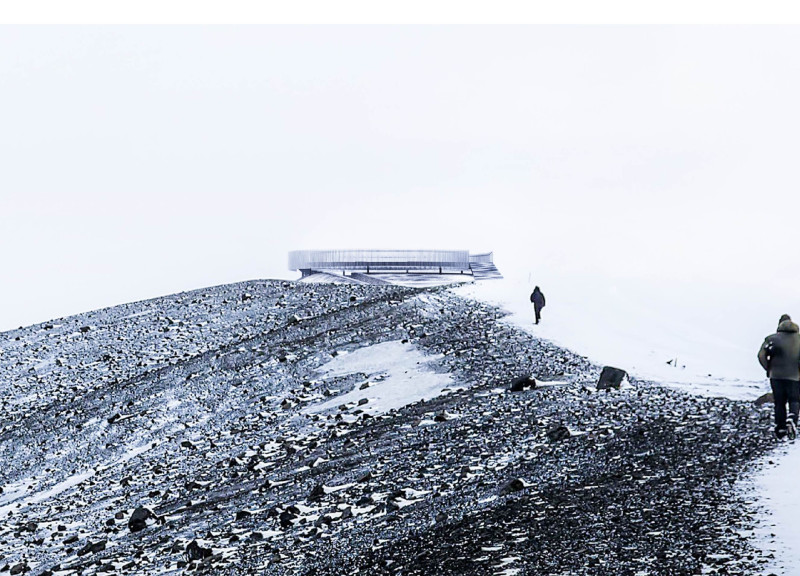5 key facts about this project
The Eye of Hverfjall is situated above the Hverfjall volcanic crater in northern Iceland and serves as an observation point for hikers. The design focuses on integrating the structure with the natural landscape, aiming to preserve the area's beauty while offering essential amenities to visitors.
Design Concept and Integration
The structure features a circular shape that reflects the outline of the surrounding tuff ring volcano. This design choice helps the facility blend into the landscape, respecting the area's unique geological features. Rising 170 meters above the ground, it has a width of 15 meters and stands as a prominent element in the environment while remaining connected to its surroundings.
Viewing Deck and Visitor Experience
A key feature of the Eye of Hverfjall is the 360-degree viewing deck. This elevated area enhances the visitor experience, allowing for expansive views of the beautiful scenery, including Lake Mývatn and the Dimmuborgir lava fields. The deck is created by excavating parts of the site, forming a circular space that functions as both a rest area and a warming hut. Lighting is intentionally designed to rely on natural sources, such as fire, creating a warm atmosphere that enhances evening visits, especially under the northern lights.
Materiality and Construction Techniques
The construction employs a modular method, using prefabricated steel elements for the viewing deck. These components are assembled on-site with the aid of heavy lift drones. This technique addresses challenges posed by the remote location while ensuring efficient construction. Gabion walls, filled with local rocks, provide support and strengthen the bond between the facility and the landscape, blending functionality with a visual connection to the environment.
Architectural Detailing
Attention to detail is evident in the overall design, highlighting the relationship between the structure and the landscape. The careful selection of natural elements and locally sourced materials creates a space that encourages visitors to engage with the Icelandic environment. The design reflects a thoughtful approach, reinforcing the connection to the volcanic landscape while providing essential services for those exploring the area.



















































